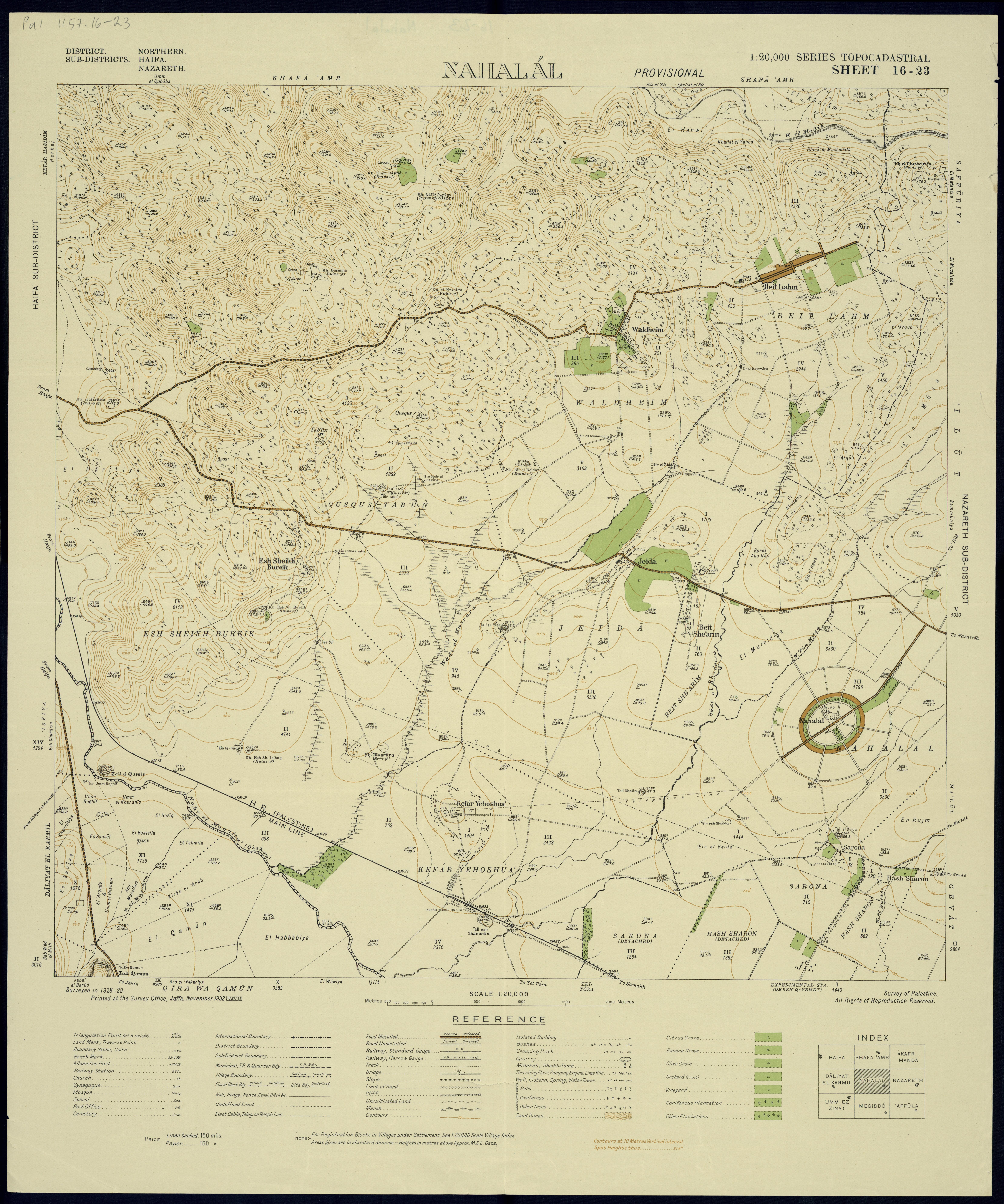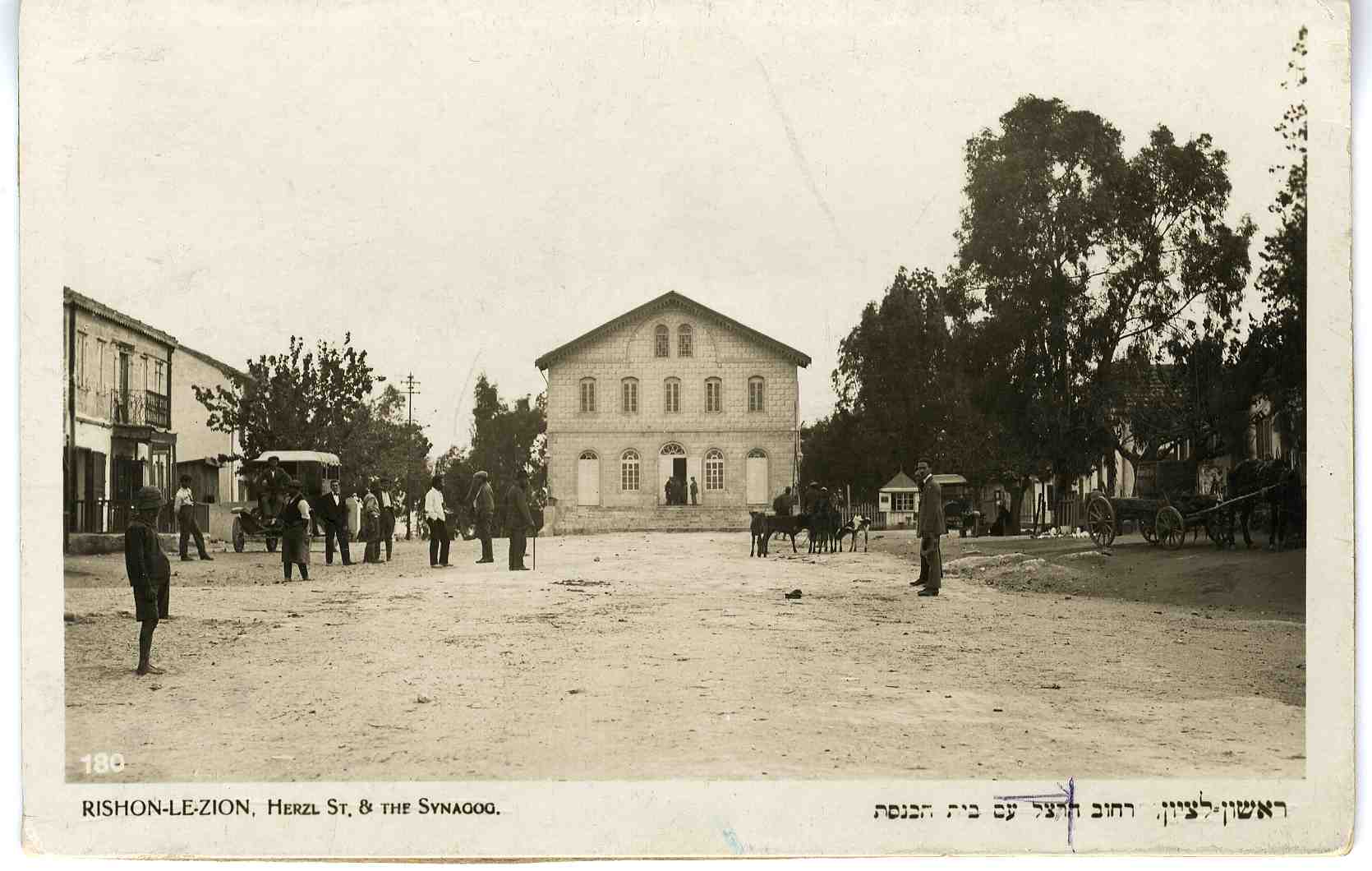|
Moshav
A moshav ( he, מוֹשָׁב, plural ', lit. ''settlement, village'') is a type of Israeli town or settlement, in particular a type of cooperative agricultural community of individual farms pioneered by the Labour Zionists between 1904 and 1914, during what is known as the second wave of ''aliyah''. A resident or a member of a moshav can be called a "moshavnik" (). The moshavim are similar to kibbutzim with an emphasis on community labour. They were designed as part of the Zionist state-building programme following the green revolution Yishuv ("settlement") in the British Mandate of Palestine during the early 20th century, but in contrast to the collective farming kibbutzim, farms in a moshav tended to be individually owned but of fixed and equal size. Workers produced crops and other goods on their properties through individual or pooled labour with the profit and foodstuffs going to provide for themselves. Moshavim are governed by an elected council ( he, ועד, ''va'a ... [...More Info...] [...Related Items...] OR: [Wikipedia] [Google] [Baidu] |
Moshav Shitufi
A moshav shitufi ( he, מושב שיתופי, lit. ''collective moshav'', pl. ''moshavim shitufiim'') is a type of cooperative Israeli village, whose organizational principles place it between the kibbutz and the moshav on the scale of cooperation. Ideology A classic moshav (formally known as ''moshav ovdim'', or ''workers' moshav'') is a village-level service cooperative that takes care of farm services (such as marketing, supply, and credit) for its members, while all production and consumption activities are handled at the level of families and households. A classical kibbutz is a village-level production cooperative, with all production, consumption, and service decisions handled collectively. Moshav shitufi is an intermediate form, in which production and services are handled collectively, while consumption decisions remain the responsibility of the households. Moshav shitufi members are engaged in agriculture and industry in the village and also work in various professions o ... [...More Info...] [...Related Items...] OR: [Wikipedia] [Google] [Baidu] |
Collective Farming
Collective farming and communal farming are various types of, "agricultural production in which multiple farmers run their holdings as a joint enterprise". There are two broad types of communal farms: agricultural cooperatives, in which member-owners jointly engage in farming activities as a collective, and state farms, which are owned and directly run by a centralized government. The process by which farmland is aggregated is called collectivization. In some countries (including the Soviet Union, the Eastern Bloc countries, China and Vietnam), there have been both state-run and cooperative-run variants. For example, the Soviet Union had both kolkhozy (cooperative-run farms) and sovkhozy (state-run farms). Pre-20th century history A small group of farming or herding families living together on a jointly managed piece of land is one of the most common living arrangements in all of human history, having co-existed and competed with more individualistic forms of ownership (as we ... [...More Info...] [...Related Items...] OR: [Wikipedia] [Google] [Baidu] |
Nahalal
Nahalal ( he, נַהֲלָל) is a moshav in northern Israel. Covering 8.5 square kilometers, it falls under the jurisdiction of the Jezreel Valley Regional Council. In it had a population of . Nahalal is best known for its general layout, as designed by Richard Kauffmann: slightly oval round, similar to a spoke wheel, with its public buildings at the "hub" and individual plots of agricultural land radiating from it like spokes with symmetrically placed roads creating eight equal sectors, an inner ring of residential buildings, and an outer ring road.Richard Kauffmann''Die Bebauungsplaene der Kleinsiedlungen Kfar-Nahalal und Kfar-Jecheskiel''('The construction plans for the agricultural small housing estates Kfar Nahalal and Kfar Jecheskiel'), published by the Department for Agricultural Colonization of the Zionist Executive, Jerusalem (1923), in German. In the Hebrew Bible Nahalal was a Levitical city mentioned in the Hebrew Bible. According to the Book of Joshua, Nahalal, als ... [...More Info...] [...Related Items...] OR: [Wikipedia] [Google] [Baidu] |
Kibbutz
A kibbutz ( he, קִבּוּץ / , lit. "gathering, clustering"; plural: kibbutzim / ) is an intentional community in Israel that was traditionally based on agriculture. The first kibbutz, established in 1909, was Degania. Today, farming has been partly supplanted by other economic branches, including industrial plants and high-tech enterprises. Kibbutzim began as utopian communities, a combination of socialism and Zionism. In recent decades, some kibbutzim have been privatized and changes have been made in the communal lifestyle. A member of a kibbutz is called a ''kibbutznik'' ( he, קִבּוּצְנִיק / ; plural ''kibbutznikim'' or ''kibbutzniks''). In 2010, there were 270 kibbutzim in Israel with population of 126,000. Their factories and farms account for 9% of Israel's industrial output, worth US$8 billion, and 40% of its agricultural output, worth over US$1.7 billion. Some kibbutzim had also developed substantial high-tech and military industries. For example, ... [...More Info...] [...Related Items...] OR: [Wikipedia] [Google] [Baidu] |
Kibbutzim
A kibbutz ( he, קִבּוּץ / , lit. "gathering, clustering"; plural: kibbutzim / ) is an intentional community in Israel that was traditionally based on agriculture. The first kibbutz, established in 1909, was Degania. Today, farming has been partly supplanted by other economic branches, including industrial plants and high-tech enterprises. Kibbutzim began as utopian communities, a combination of socialism and Zionism. In recent decades, some kibbutzim have been privatized and changes have been made in the communal lifestyle. A member of a kibbutz is called a ''kibbutznik'' ( he, קִבּוּצְנִיק / ; plural ''kibbutznikim'' or ''kibbutzniks''). In 2010, there were 270 kibbutzim in Israel with population of 126,000. Their factories and farms account for 9% of Israel's industrial output, worth US$8 billion, and 40% of its agricultural output, worth over US$1.7 billion. Some kibbutzim had also developed substantial high-tech and military industries. For example, ... [...More Info...] [...Related Items...] OR: [Wikipedia] [Google] [Baidu] |
Mizrahi Jews
Mizrahi Jews ( he, יהודי המִזְרָח), also known as ''Mizrahim'' () or ''Mizrachi'' () and alternatively referred to as Oriental Jews or ''Edot HaMizrach'' (, ), are a grouping of Jewish communities comprising those who remained in the Land of Israel and those who existed in diaspora throughout and around the Middle East and North Africa (MENA) from biblical times into the modern era. In current usage, the term ''Mizrahi'' is almost exclusively applied to descendants of Jewish communities from Western Asia and North Africa; in this classification are the descendants of Mashriqi Jews who had lived in Middle Eastern countries, such as Iraqi Jews, Kurdish Jews, Lebanese Jews, Syrian Jews, Egyptian Jews, Yemenite Jews, Turkish Jews, and Iranian Jews; as well as the descendants of Maghrebi Jews who had lived in North African countries, such as Libyan Jews, Tunisian Jews, Algerian Jews, and Moroccan Jews. These various Jewish communities were first officially groupe ... [...More Info...] [...Related Items...] OR: [Wikipedia] [Google] [Baidu] |
Yishuv
Yishuv ( he, ישוב, literally "settlement"), Ha-Yishuv ( he, הישוב, ''the Yishuv''), or Ha-Yishuv Ha-Ivri ( he, הישוב העברי, ''the Hebrew Yishuv''), is the body of Jewish residents in the Land of Israel (corresponding to the southern part of Ottoman Syria until 1918, OETA South 1917–1920, and Mandatory Palestine 1920–1948) prior to the establishment of the State of Israel in 1948. The term came into use in the 1880s, when there were about 25,000 Jews living across the Land of Israel and continued to be used until 1948, by which time there were some 630,000 Jews there. The term is still in use to denote the pre-1948 Jewish residents in the Land of Israel. A distinction is sometimes drawn between the Old Yishuv and the New Yishuv. The Old Yishuv refers to all the Jews living in the Land of Israel before the first Zionist immigration wave ('' aliyah'') of 1882, and to their descendants who kept the old, non-Zionist way of life until 1948. The Old Yishuv resid ... [...More Info...] [...Related Items...] OR: [Wikipedia] [Google] [Baidu] |
Jezreel Valley
The Jezreel Valley (from the he, עמק יזרעאל, translit. ''ʿĒmeq Yīzrəʿēʿl''), or Marj Ibn Amir ( ar, مرج ابن عامر), also known as the Valley of Megiddo, is a large fertile plain and inland valley in the Northern District of Israel. It is bordered to the north by the highlands of the Lower Galilee region, to the south by the Samarian highlands, to the west and northwest by the Mount Carmel range, and to the east by the Jordan Valley, with Mount Gilboa marking its southern extent. The largest settlement in the valley is the city of Afula, which lies near its center. Etymology The Jezreel Valley takes its name from the ancient city of Jezreel (known in Hebrew as Yizre'el; ; known in Arabic as Zir'ēn, ) which was located on a low hill overlooking the southern edge of the valley. The word ''Jezreel'' comes from the Hebrew, and means "God sows" or " El sows".Cheyne and Black, '' Encyclopedia Biblica'' The phrase "valley of Jezreel" was sometimes used ... [...More Info...] [...Related Items...] OR: [Wikipedia] [Google] [Baidu] |
Labor Zionism
Labor Zionism ( he, צִיּוֹנוּת סוֹצְיָאלִיסְטִית, ) or socialist Zionism ( he, תְּנוּעָת הָעַבוֹדָה, label=none, translit=Tnuʽat haʽavoda) refers to the left-wing, socialist variation of Zionism. For many years, it was the most significant tendency among Zionists and Zionist organizations, and was seen as the Zionist sector of the historic Jewish labor movements of Eastern Europe and Central Europe, eventually developing local units in most countries with sizable Jewish populations. Unlike the "political Zionist" tendency founded by Theodor Herzl and advocated by Chaim Weizmann, Labor Zionists did not believe that a Jewish state would be created by simply appealing to the international community or to powerful nations such as the United Kingdom, Germany, or the former Ottoman Empire. Rather, they believed that a Jewish state could only be created through the efforts of the Jewish working class making '' aliyah'' to the Land of Is ... [...More Info...] [...Related Items...] OR: [Wikipedia] [Google] [Baidu] |
Six-Day War
The Six-Day War (, ; ar, النكسة, , or ) or June War, also known as the 1967 Arab–Israeli War or Third Arab–Israeli War, was fought between Israel and a coalition of Arab states (primarily Egypt, Syria, and Jordan) from 5 to 10 June 1967. Escalated hostilities broke out amid poor relations between Israel and its Arab neighbours following the 1949 Armistice Agreements, which were signed at the end of the First Arab–Israeli War. Earlier, in 1956, regional tensions over the Straits of Tiran escalated in what became known as the Suez Crisis, when Israel invaded Egypt over the Egyptian closure of maritime passageways to Israeli shipping, ultimately resulting in the re-opening of the Straits of Tiran to Israel as well as the deployment of the United Nations Emergency Force (UNEF) along the Egypt–Israel border. In the months prior to the outbreak of the Six-Day War in June 1967, tensions again became dangerously heightened: Israel reiterated its post-1956 position ... [...More Info...] [...Related Items...] OR: [Wikipedia] [Google] [Baidu] |
Palestinians
Palestinians ( ar, الفلسطينيون, ; he, פָלַסְטִינִים, ) or Palestinian people ( ar, الشعب الفلسطيني, label=none, ), also referred to as Palestinian Arabs ( ar, الفلسطينيين العرب, label=none, ), are an ethnonational group descending from peoples who have inhabited the region of Palestine over the millennia, and who are today culturally and linguistically Arab. Despite various wars and exoduses, roughly one half of the world's Palestinian population continues to reside in the territory of former British Palestine, now encompassing the West Bank and the Gaza Strip (the Palestinian territories) as well as Israel. In this combined area, , Palestinians constituted 49 percent of all inhabitants, encompassing the entire population of the Gaza Strip (1.865 million), the majority of the population of the West Bank (approximately 2,785,000 versus some 600,000 Israeli settlers, which includes about 200,000 in East Jerusalem), a ... [...More Info...] [...Related Items...] OR: [Wikipedia] [Google] [Baidu] |






